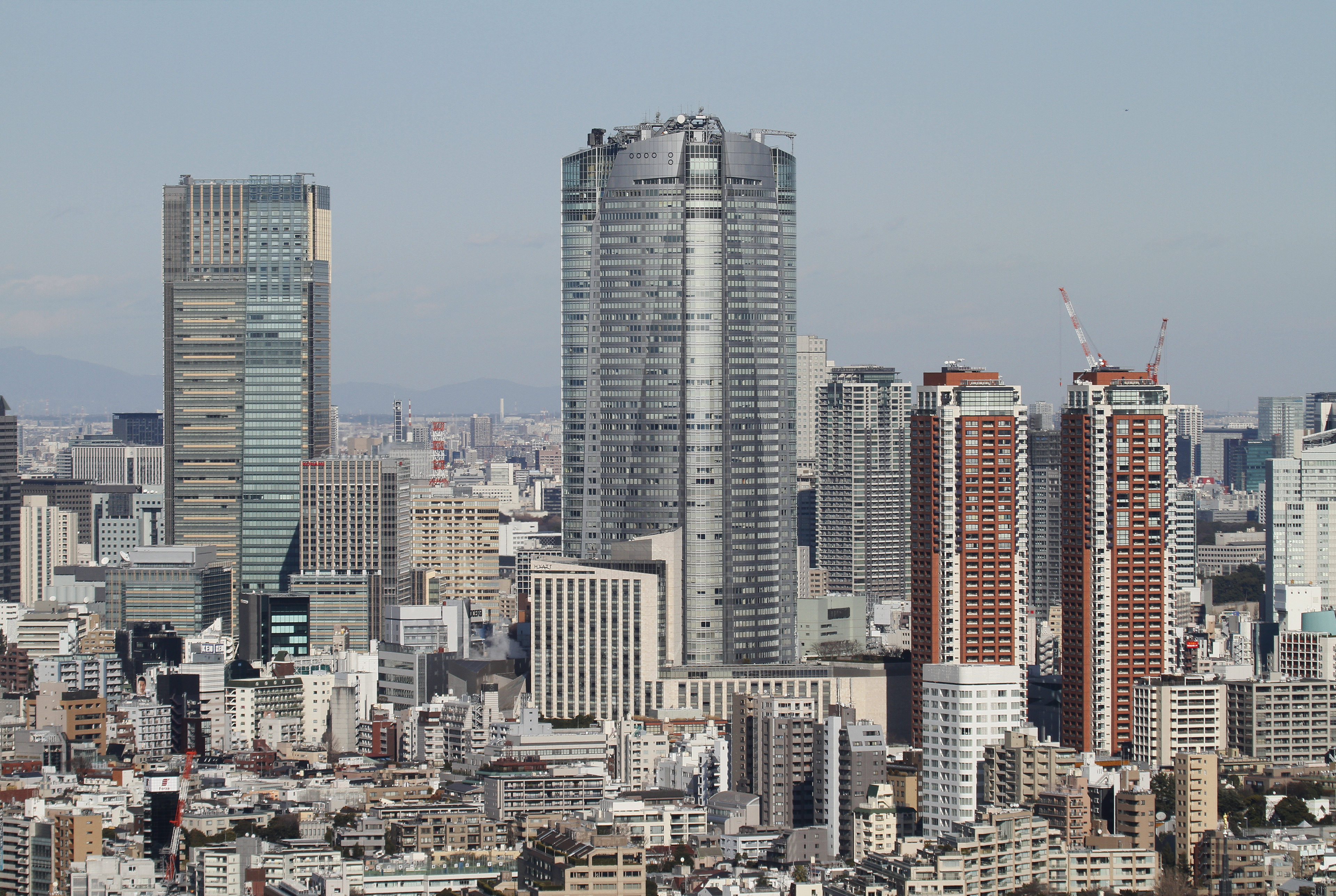|
Honda Toshinaga
was a daimyō of the early to mid Edo period, Japan, who ruled Okazaki and Yokosuka domains, and was finally transferred to Murayama Domain in Dewa Province. Toshinaga was the 6th son of Honda Tadatoshi, daimyō of Okazaki Domain. His mother was a daughter of Inoue Masanari, daimyō of Yokosuka Domain. Toshinaga succeeded to clan leadership upon his father's death in 1645; however, he received only 50,000 of the 60,000 ''koku'' that had comprised Okazaki Domain under Tadatoshi's rule; the remaining 10,000 ''koku'' was divided between his brothers Honda Sukehisa and Honda Toshirō. Toshinaga was transferred to Yokosuka Domain during the same year. He held the courtesy title of junior 5th court rank, lower grade (''ju go i no ge'' 従五位下), and ''Echizen no Kami'' and was married to a daughter of Matsudaira Masatsuna, daimyō of Tamanawa Domain in Sagami Province. The Tokugawa shogunate confiscated Yokosuka Domain on February 23, 1682, charging Toshinaga with gross misc ... [...More Info...] [...Related Items...] OR: [Wikipedia] [Google] [Baidu] |
Daimyō
were powerful Japanese magnates, feudal lords who, from the 10th century to the early Meiji era, Meiji period in the middle 19th century, ruled most of Japan from their vast, hereditary land holdings. They were subordinate to the shogun and nominally to the Emperor of Japan, emperor and the ''kuge''. In the term, means 'large', and stands for , meaning 'private land'. From the ''shugo'' of the Muromachi period through the Sengoku period, Sengoku to the ''daimyo'' of the Edo period, the rank had a long and varied history. The backgrounds of ''daimyo'' also varied considerably; while some ''daimyo'' clans, notably the Mōri clan, Mōri, Shimazu clan, Shimazu and Hosokawa clan, Hosokawa, were cadet branches of the Imperial family or were descended from the ''kuge'', other ''daimyo'' were promoted from the ranks of the samurai, notably during the Edo period. ''Daimyo'' often hired samurai to guard their land, and they paid the samurai in land or food as relatively few could aff ... [...More Info...] [...Related Items...] OR: [Wikipedia] [Google] [Baidu] |
Sagami Province
was a province of Japan located in what is today the central and western Kanagawa Prefecture. Nussbaum, Louis-Frédéric. (2005). "''Kanagawa''" at . Sagami Province bordered the provinces of Izu, Musashi, and Suruga. It had access to the Pacific Ocean through Sagami Bay. However, most of the present-day cities of Yokohama and Kawasaki, now part of Kanagawa Prefecture, were not in Sagami, but rather, in Musashi Province. Its abbreviated form name was . History Sagami was one of the original provinces of Japan established in the Nara period under the Taihō Code. The area has been inhabited since prehistoric times. Although remnants from the Japanese Paleolithic and Yayoi periods are scarce, remains from the Jōmon period are relatively plentiful. Kofun period remains are generally from the 1st – 4th centuries AD. Whether or not Sagami was originally part of Musashi prior to the Nara period is still a topic of controversy. The original capital of the province may have be ... [...More Info...] [...Related Items...] OR: [Wikipedia] [Google] [Baidu] |
1693 Deaths
Events January–March * January 11 – 1693 Sicily earthquake: Mount Etna erupts, causing a devastating earthquake that affects parts of Sicily and Malta. * January 22 – A total lunar eclipse is visible across North and South America. * February 8 – The College of William & Mary in Williamsburg, Virginia is granted a Royal charter. * February 27 – The publication of the first women's magazine, titled ''The Ladies' Mercury'', takes place in London. It is published by the Athenian Society. * March 27 – Bozoklu Mustafa Pasha becomes the new Grand Vizier of the Ottoman Empire, after Sultan Ahmed II appoints him as the successor of Çalık Ali Pasha. April–June * April 4 – Anne Palles becomes the last accused witch to be executed for witchcraft in Denmark, after having been convicted of using powers of sorcery. King Christian V accepts her plea not to be burned alive, and she is beheaded before her body is set afire. * April 5 – The Order of Saint Louis ... [...More Info...] [...Related Items...] OR: [Wikipedia] [Google] [Baidu] |
1635 Births
Events January–March * January 23 – 1635 Capture of Tortuga: The Spanish Navy captures the Caribbean island of Tortuga off of the coast of Haiti after a three-day battle against the English and French Navy. * January 25 – King Thalun moves the capital of Burma from Pegu to Ava. * February 22 – The ''Académie française'' in Paris is formally constituted, as the national academy for the preservation of the French language. * March 22 – The Peacock Throne of India's Mughal Empire is inaugurated in a ceremony in Delhi to support the seventh anniversary of Shah Jahan's accession to the throne as Emperor. * March 26 – Philipp Christoph von Sötern, the Archbishop-Elector of Trier, is taken prisoner in a surprise attack by Spanish Habsburg troops, leading to a declaration of war against Spain by France and the beginning of the Franco-Spanish War. April–June * April 13 – Druze warlord Fakhr-al-Din II is executed in Cons ... [...More Info...] [...Related Items...] OR: [Wikipedia] [Google] [Baidu] |
Nishio Tadanari
was a daimyō of the early to mid Edo period, Japan, who ruled the Tanaka and Komoro domains, and was finally transferred to Yokosuka Domain in Tōtōmi Province, where his descendants ruled until the Meiji Restoration. Biography Nishio Tadanari was the eldest son of Nishio Tadaakira, daimyō of Tanaka Domain in Suruga Province. However, as Tadaakira died in 1654, Tadanari succeeded to the Nishio clan leadership as an infant. Tanaka Domain's revenues under the Nishio had been 25,000 ''koku''; but since Tadanari's uncle Nishio Tadatomo was granted 5000 ''koku'' of territory, the domain's income was reduced to 20,000 ''koku''. In 1661 the young Tadanari was received by ''shōgun'' Tokugawa Ietsuna, and given the courtesy title of ''Oki no kami'' and junior 5th court rank, lower grade. Tanaka Domain reverted to 25,000 ''koku'' status upon Nishio Tadatomo's death in 1675; however, soon afterward, in 1679, the Nishio clan was relocated to Komoro Domain in Shinano Province. Tadanar ... [...More Info...] [...Related Items...] OR: [Wikipedia] [Google] [Baidu] |
Inoue Masatoshi
Inoue (kanji: , historical kana orthography: ''Winouhe'') is the 16th most common Japanese surname. Historically, it was also romanized as Inouye, and many Japanese-descended people outside of Japan still retain this spelling. A less common variant is . Notable people with the surname include: *, Japanese lyricist *, Japanese film director *, Japanese keyboardist, composer and producer *Alice Inoue (born 1964), American astrologer and writer *, Japanese volleyball player *, Japanese announcer *, Japanese writer and translator *, Japanese footballer *, Japanese singer *, Japanese businessman and inventor *, Japanese singer, composer and multi-instrumentist *, Japanese rugby union player *Daniel Inouye (1924–2012), United States Senator for Hawaii and Medal of Honor recipient *Egan Inoue (born 1965), American jiu-jitsu practitioner, mixed martial artist and racquetball player *Enson Inoue (born 1967), American mixed martial artist *, Japanese founder of Toyo University, educator ... [...More Info...] [...Related Items...] OR: [Wikipedia] [Google] [Baidu] |
Mizuno Tadayoshi
() is a Japanese sports equipment and sportswear company, founded in Osaka in 1906 by Rihachi Mizuno. Today, Mizuno is a global corporation which makes a wide variety of sports equipment and sportswear for badminton, baseball, boxing, cycling, football, golf, judo, rugby, running, skiing, athletics, swimming, table tennis, tennis and volleyball. History Mizuno was founded in 1906 as Mizuno Brothers, Ltd. by Rihachi Mizuno and his younger brother Rizo, in Osaka. The shop sold Western sundries, including baseballs, and then in 1907 began to sell order-made athletic wear. In 1910 the shop moved to Umeda-Shinmichi and its name was changed to Mizuno Shop. In 1913 the firm began to manufacture baseballs and gloves. In 1933 Mizuno presented ''Star Line'', the first Japanese made golf clubs. By 1935 its golf club showroom was the world's largest. In 1941 the company name was changed to Mizuno Co., Ltd, and has remained the same since. During World War II, Mizuno manufactured milita ... [...More Info...] [...Related Items...] OR: [Wikipedia] [Google] [Baidu] |
Tokyo
Tokyo (; ja, 東京, , ), officially the Tokyo Metropolis ( ja, 東京都, label=none, ), is the capital and largest city of Japan. Formerly known as Edo, its metropolitan area () is the most populous in the world, with an estimated 37.468 million residents ; the city proper has a population of 13.99 million people. Located at the head of Tokyo Bay, the prefecture forms part of the Kantō region on the central coast of Honshu, Japan's largest island. Tokyo serves as Japan's economic center and is the seat of both the Japanese government and the Emperor of Japan. Originally a fishing village named Edo, the city became politically prominent in 1603, when it became the seat of the Tokugawa shogunate. By the mid-18th century, Edo was one of the most populous cities in the world with a population of over one million people. Following the Meiji Restoration of 1868, the imperial capital in Kyoto was moved to Edo, which was renamed "Tokyo" (). Tokyo was devastate ... [...More Info...] [...Related Items...] OR: [Wikipedia] [Google] [Baidu] |
Roppongi
is a district of Minato, Tokyo, Japan, famous for the affluent Roppongi Hills development area and popular night club scene. A few foreign embassies are located near Roppongi, and the night life is popular with locals and foreigners alike. It is in the central part of Tokyo, south of Akasaka and north of Azabu. History The name ''Roppongi'', which appears to have been coined around 1660, literally means "six trees". Six very old and large zelkova trees used to mark the area; the first three were cleared, and the last were destroyed during World War II. Another legend has it that the name comes from the fact that six ''daimyōs'' lived nearby during the Edo period, each with the kanji character for "tree" or a kind of tree in their names. Roppongi was not extensively populated until after the Meiji Restoration, although the area was trafficked for centuries and served as the site of the cremation of Shōgun Tokugawa Hidetada's wife in 1626.Gary CooperGood ol' six trees—the way ... [...More Info...] [...Related Items...] OR: [Wikipedia] [Google] [Baidu] |
Honda Sukeyoshi
was a feudal domain under the Tokugawa shogunate of Edo period Japan. It was located in northern Shinano Province, Honshū. The domain was centered at Iiyama Castle, located in what is now part of the city of Iiyama in Nagano Prefecture."Shinano Province" at JapaneseCastleExplorer.com retrieved 2013-5-13. History In 1603, when was awarded Kawanakajima Domain, the area around Iiyama was assigned to his retainer, Minagawa Hiroteru as a 40,000 '' |





